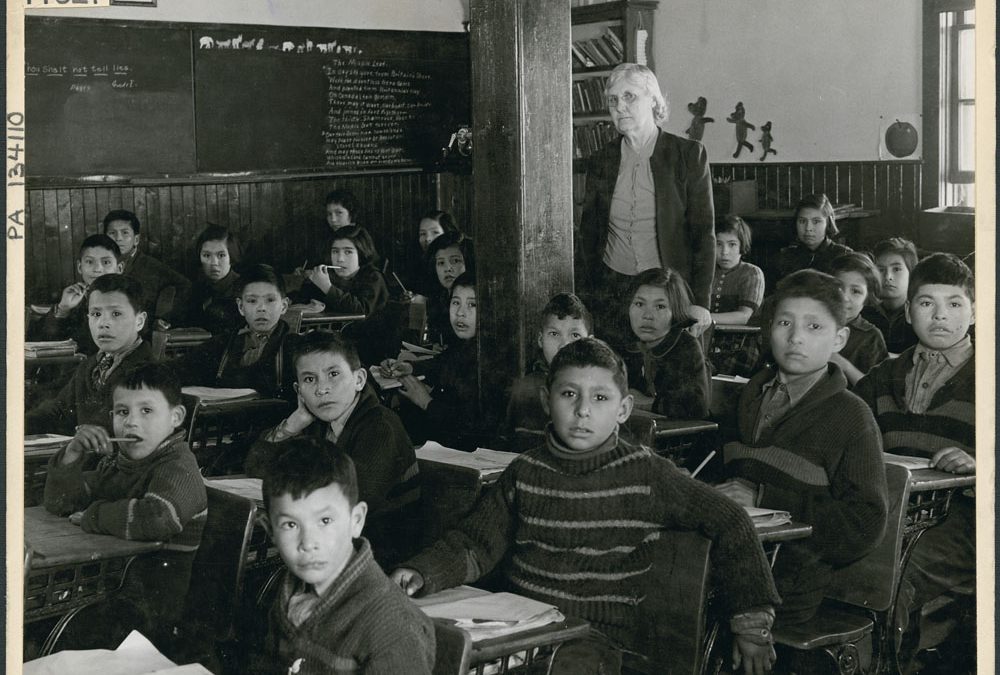The province is committing $2 million for the research and exploration of unmarked burials and graves at federally operated residential schools in Saskatchewan.
“It will be challenging and emotional road for all of us. But one we must walk together because it’s the right thing to do,” said First Nations, Métis and Northern Affairs Minister Don McMorris. “We owe it to those who were lost to this residential school system and those who continue to suffer from the effects.”
The Federation of Sovereign Indigenous Nations is to receive the money. It has already identified the former residential schools of Muskowekwan, Onion Lake St. Anthony’s, Beauval, Guy Hill, Lebret, and Sturgeon Landin as possible sites for research.
McMorris believes the list of potential residential schools’ sites will grow.
“There are still survivors out there who don’t know where their loved one is. They have disappeared,” said Chief Bobby Cameron. “We hear these stories at every single residential school. I haven’t found my little brother or I haven’t seen my little sister; I don’t know where they went.”
McMorris is challenging Ottawa to match the province’s finding commitment, bringing the total to $4 million.
Previously Crown-Indigenous Relations Minister Carolyn Bennett indicated there is $27 million unspent for unmarked graves research.
Cameron expressed that any remains discovered, the site should be declared sacred.
“I want to tell each and every one of you a story of those poor little ones that we will never find,” explained Cameron. “Those ones will have escaped those institutions for many, many decades. And were lost in the bushes in the country due to the elements. We will never find those ones. But we will find some of them.”
The FSIN again pushed for Pope Francis to come to Saskatchewan, this time going to several residential school sites and apologize for the Catholic Churches involvement in the school system.
According to the Truth and Reconciliation Commission, Saskatchewan had approximately 20 residential schools.
Cameron pushed McMorris to acknowledge provincially co-operated schools, such as Timber Bay and Ile a la Crosse. The Timber Bay school is not federally recognized and was left out of the residential school’s settlement.
Yet as this work produces sites with human remains, what will the protocols be in recovering?
Indigenous Services Minister Marc Miller said there could be legal ramifications.
“I think that is why there is so much difficulty and challenging in establishing clear protocols. I don’t think any community would appreciate investigative forces coming in with yellow tape and putting them all up around potential sites,” Miller explained. “These are very sensitive issues. They are potential crime scenes you can’t hide that fact that there is a corresponding search for truth that no one wants to see any tampering evidence, I think is that has guided are very delicate and sensitive approach, focusing on the communities for and closure for answers.”
Miller said its important that First Nations have access to school records, but speculated that the county may never get a full picture or that questions will be answered satisfactorily on unmarked graves at residential schools.
Cameron explained that a portion of the provincial funding will go towards research, in listening to Elders stories on potential sites. He said healing, ceremonies and protocols would also be funded.
“Now with this $2 million with from the provincial government, it’s going to enhance what we expect during this whole journey with our survivors and the descendant’s their input, their guidance is going to drive this whole process. We cannot be clearer we will not deviate from their direction and advice. It’s going to be a long process, healing process. And then we’re going to see this to the end.”
